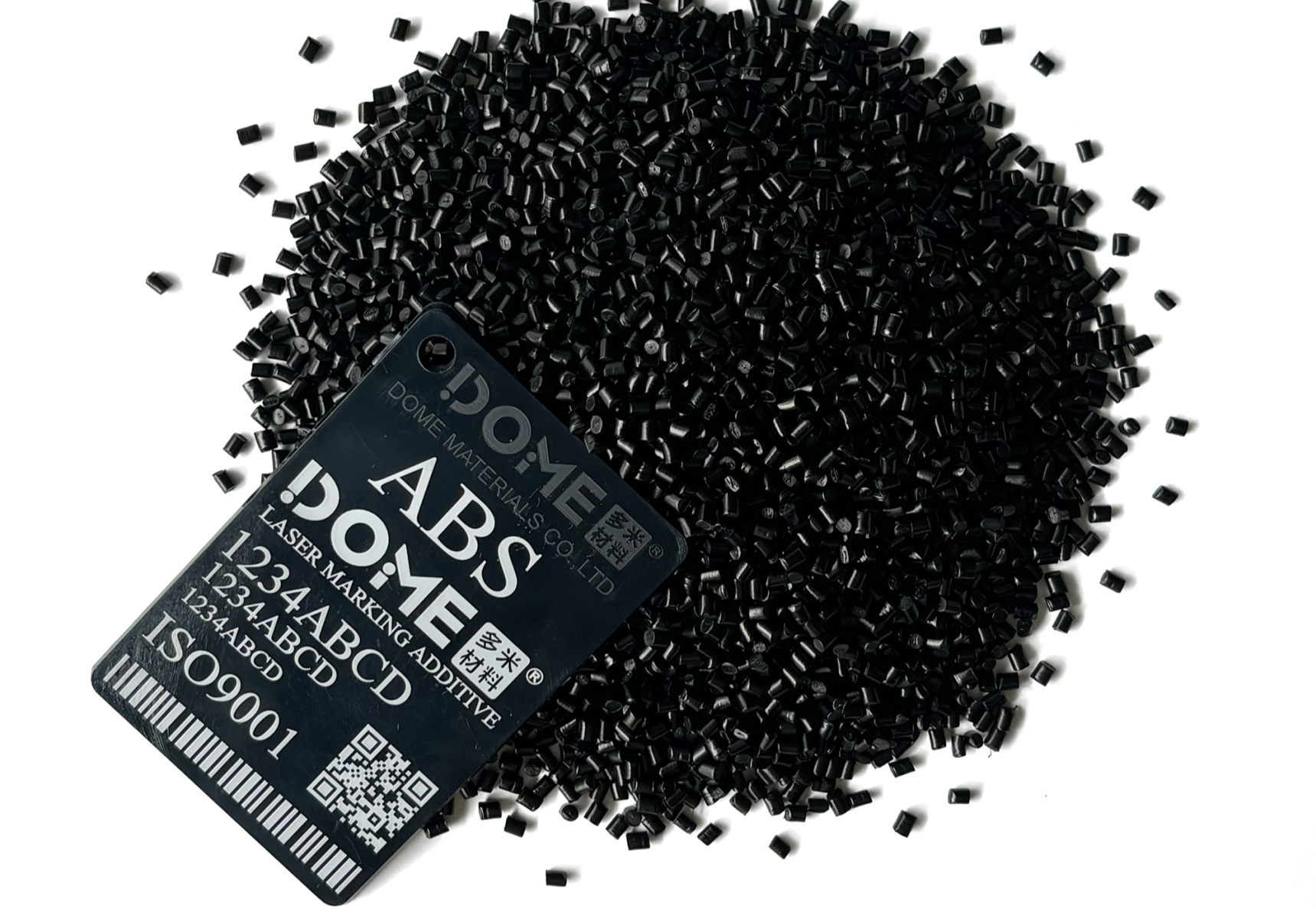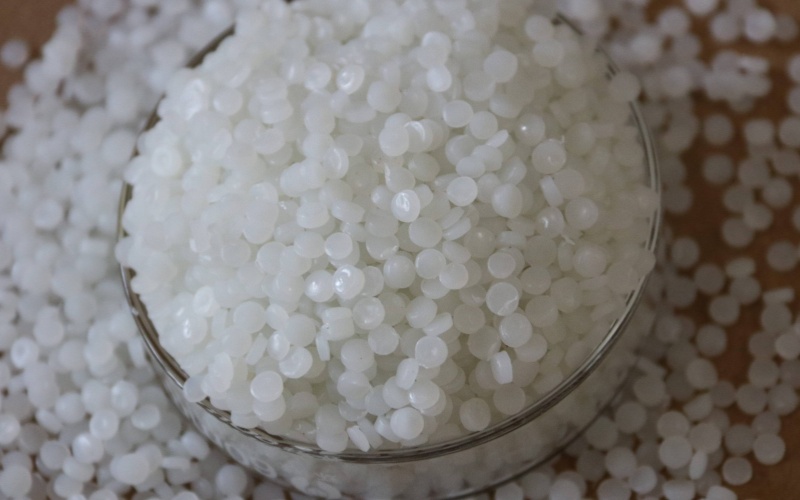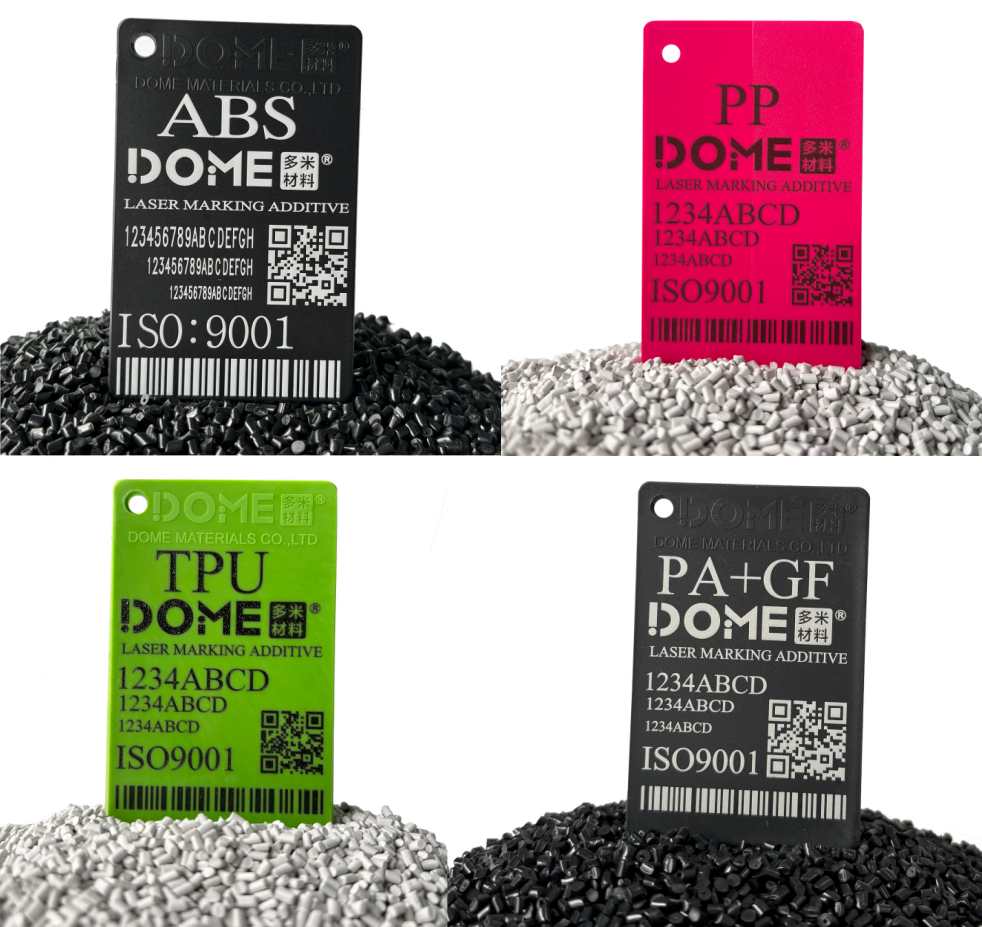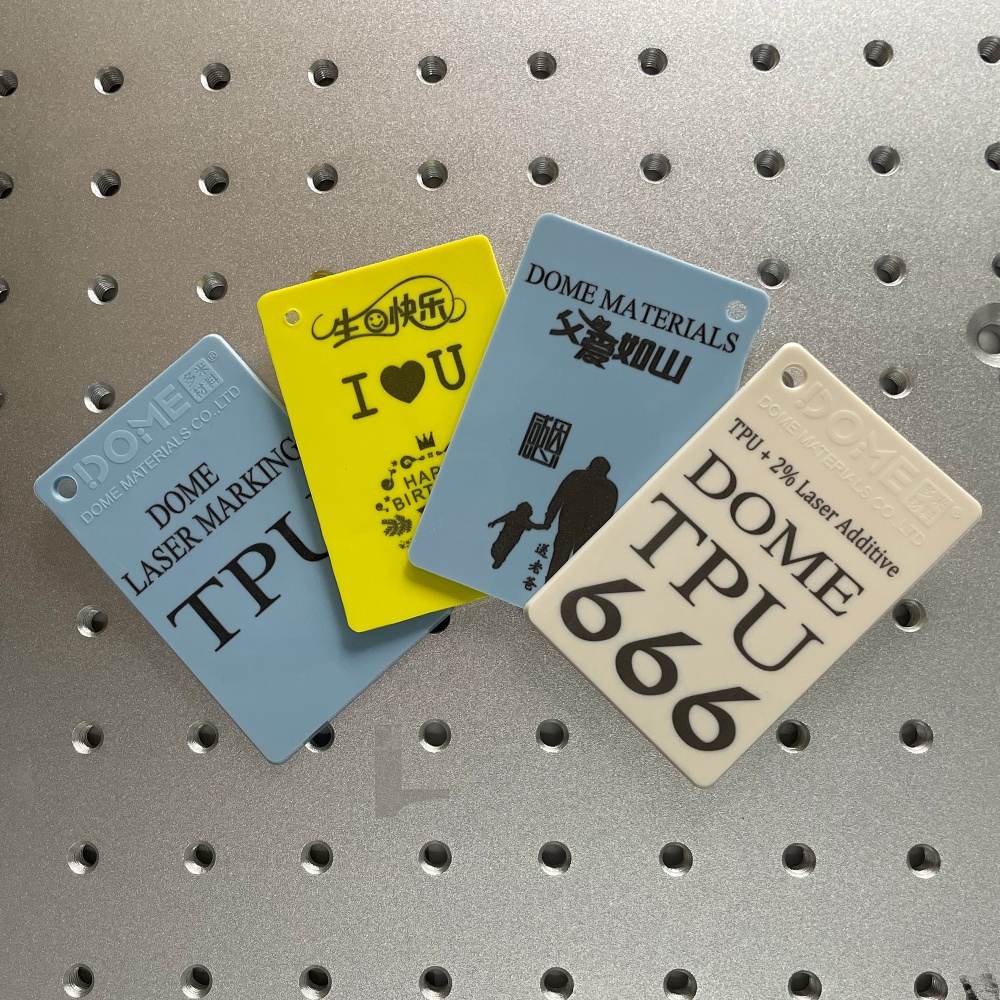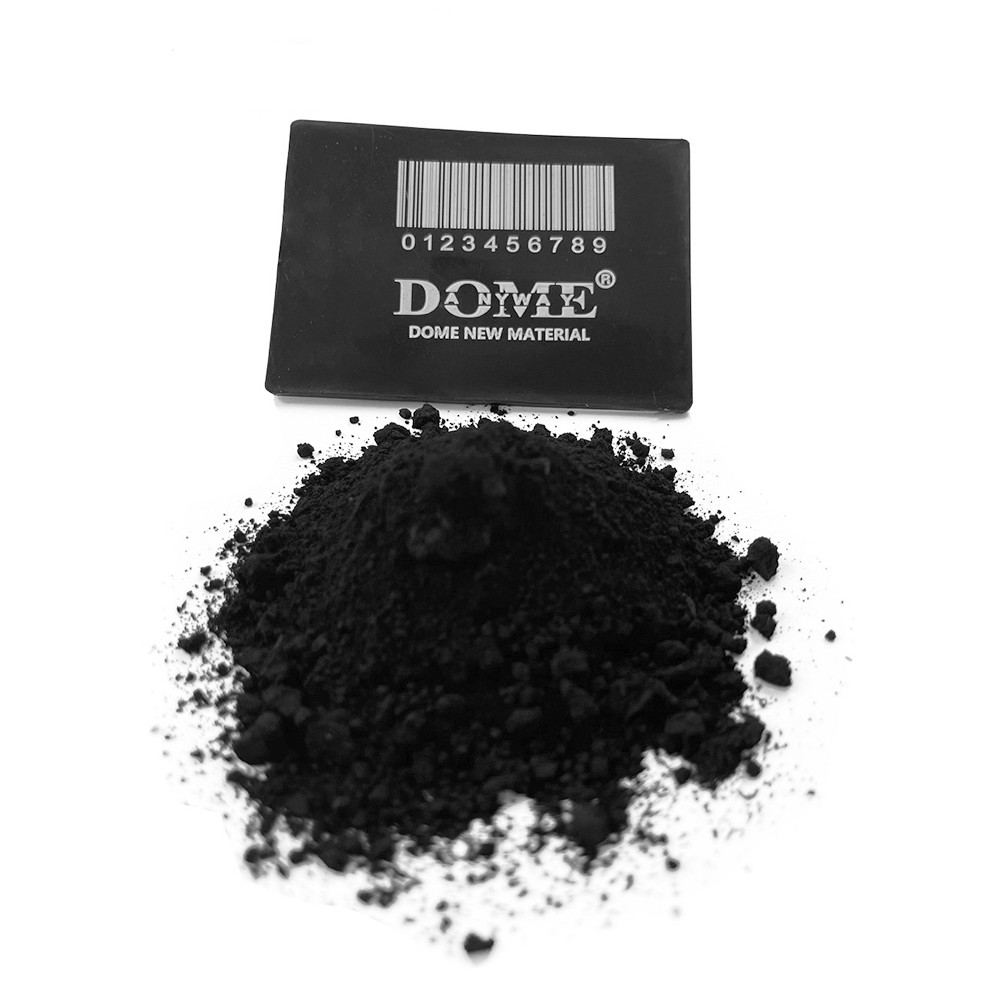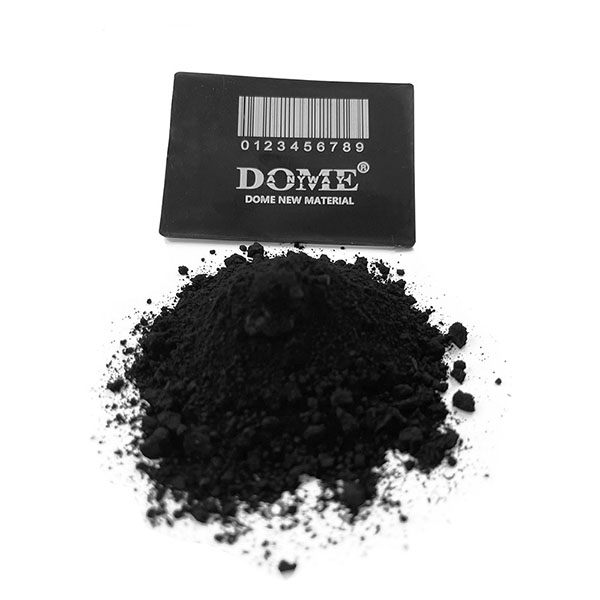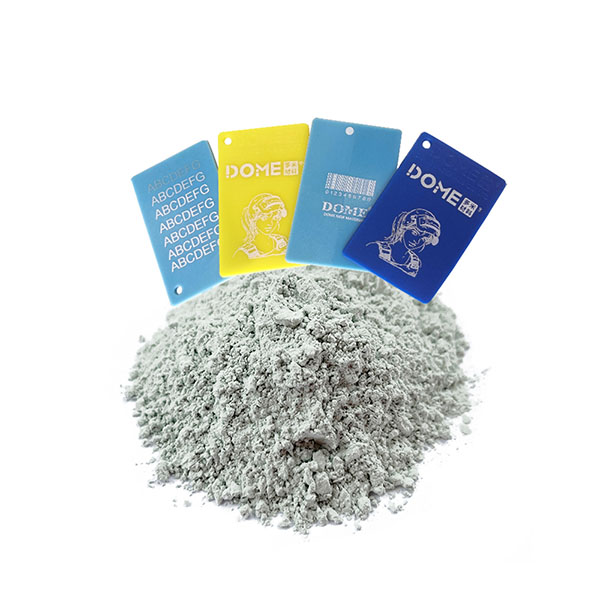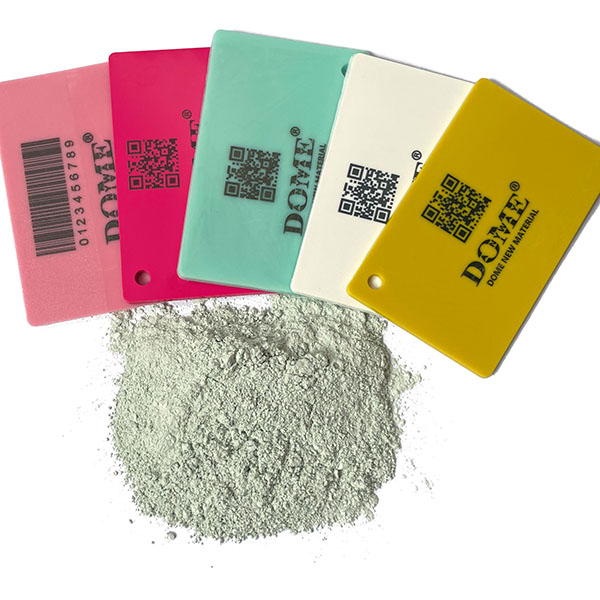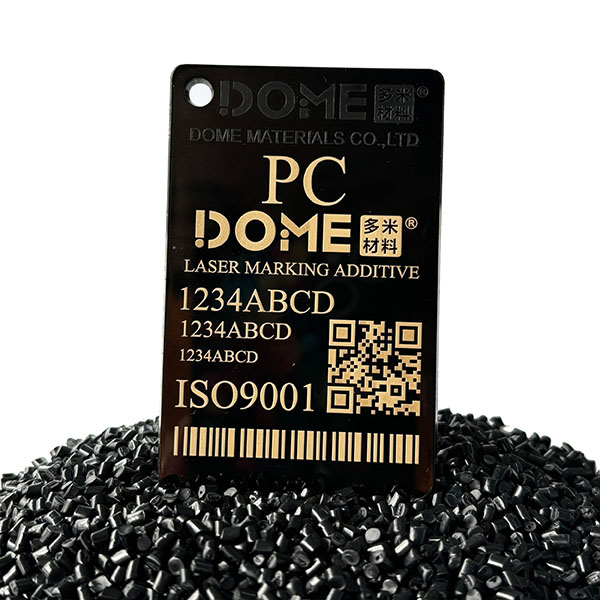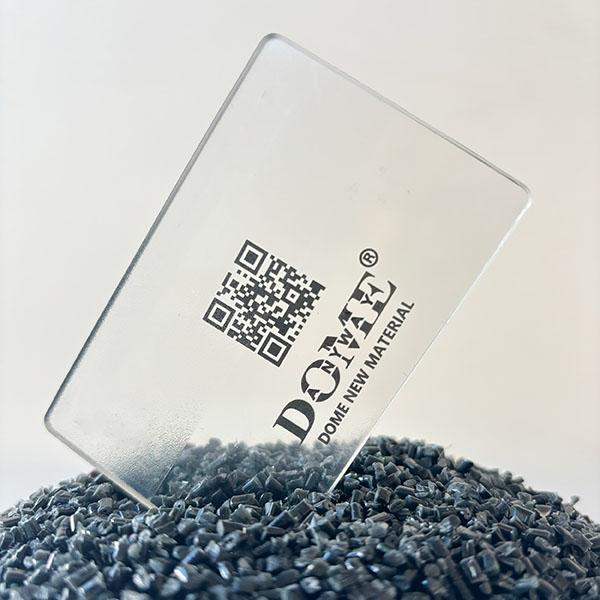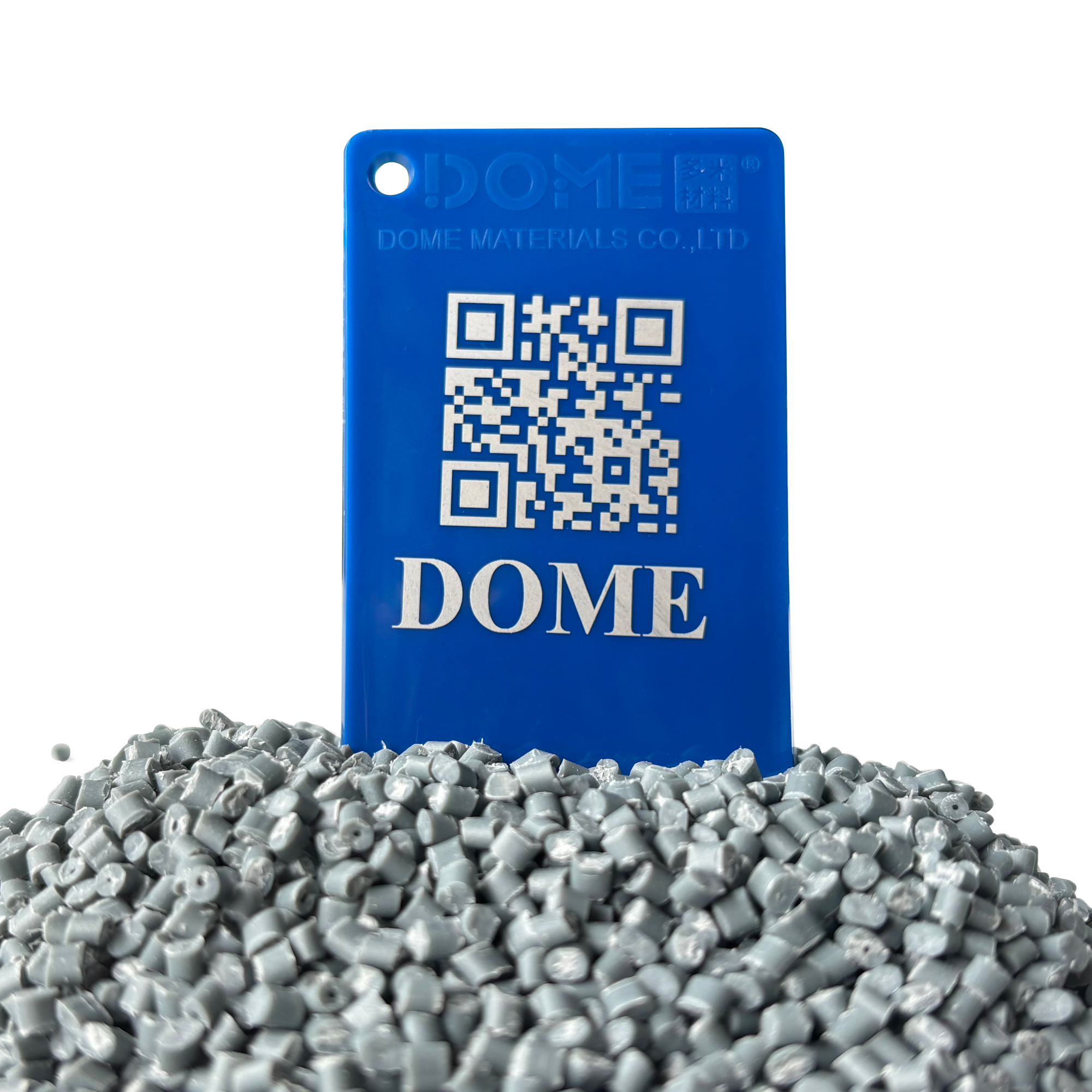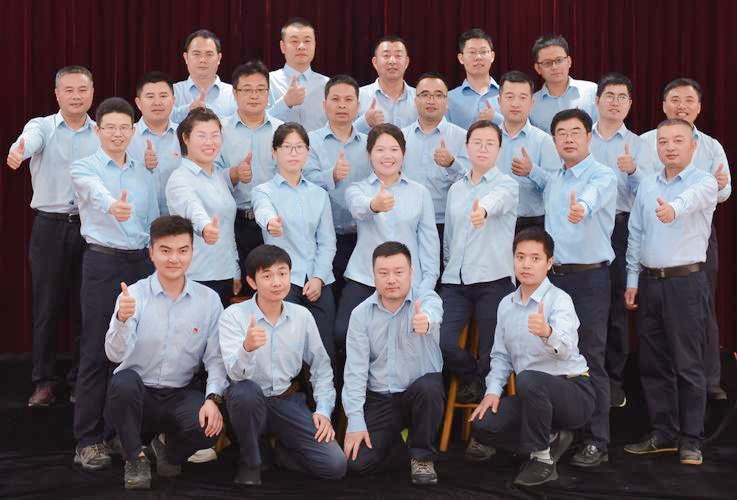Laser marking additives play a critical role in achieving high-quality, durable, and compliant markings in plastic manufacturing. Selecting the right additives, such as those provided by DOME Materials, ensures compatibility, enhances marking quality, and improves production efficiency. This article explores key considerations—plastic compatibility, laser type, marking quality, durability, compliance, and cost—while highlighting the benefits of using DOME Materials Laser Marking Additives for Plastics.
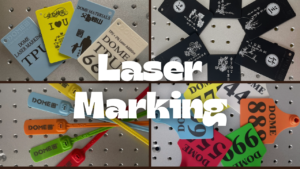
Key Considerations for Laser Marking Additives
Choosing the optimal laser marking additive requires evaluating several factors to ensure compatibility, efficiency, and cost-effectiveness. Below is a summary of the critical aspects and their impact on product quality and manufacturing efficiency:
| Aspect | Impact on Product Quality and Efficiency |
|---|---|
| Compatibility | Ensures effective marking and prevents damage to specific plastics. |
| Marking Quality | Delivers sharp, readable, and high-contrast identification. |
| Durability | Maintains mark integrity under environmental stress. |
| Compliance | Meets industry standards, critical for regulated sectors. |
DOME Materials Laser Marking Additives for Plastics provide tailored solutions to meet these criteria, ensuring reliable and high-quality results.
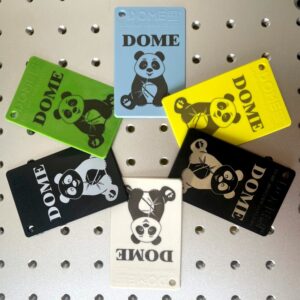
Key Takeaways for Selecting Laser Marking Additives
- Match Additives to Plastic Type: Compatibility with specific plastics prevents damage and ensures effective marking.
- Ensure Uniform Additive Dispersion: Uniform dispersion guarantees consistent marking across the product surface.
- Align Laser Type with Additives: Proper pairing enhances marking quality, efficiency, and contrast.
- Prioritize Contrast and Clarity: High-contrast, clear marks improve identification and reduce errors.
- Evaluate Total Cost: Consider operational savings and efficiency gains alongside the initial additive cost.
Plastic Compatibility
Additive-Plastic Fit
The type of plastic significantly influences the performance of laser marking additives. Different plastics react uniquely to laser energy and additives, affecting mark appearance (e.g., black, white, or golden). Common plastics used in laser marking include:
- Polypropylene (PP)
- Polyethylene (PE)
- Polyvinyl chloride (PVC)
- Acrylonitrile butadiene styrene (ABS)
- Polycarbonate (PC)
- Polyamide (nylon)
- Polyethylene terephthalate (PET)
- Thermoplastic elastomers (TPE, TPU, TPV, TPR)
- Polybutylene terephthalate (PBT)
- Polyoxymethylene (POM)
- Epoxy resin
For challenging plastics like polycarbonate, which may produce weak or uneven marks, specialized additives are essential. DOME Materials Laser Marking Additives for Plastics ensure consistent, high-quality results across various plastics.
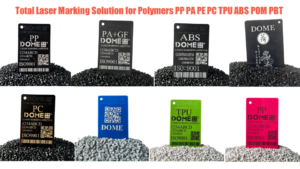
Impact of Fillers
Fillers such as calcium carbonate, talc, titanium dioxide, or carbon black can affect marking performance. High filler content, like calcium carbonate or glass fiber, may hinder clear, high-contrast marks. Selecting additives designed for these conditions is critical.
Tip: Test for uniform additive dispersion to ensure even marking across the product. Recommended concentration ranges for laser marking additives typically fall between 0.5% and 4.0%, depending on the source (e.g., Plastics Decorating). Adhering to these ranges optimizes mark quality and minimizes material waste.
Laser and Additive Compatibility
Laser Types
The choice of laser technology impacts marking outcomes. Each laser type interacts differently with plastics and additives, requiring careful matching to achieve optimal results. The following table outlines common laser technologies and their compatibility:
| Laser Technology | Compatibility with Plastics | Key Features |
|---|---|---|
| CO2 Laser | PVC, food packaging, general plastics | High-quality, cost-effective marks |
| Fiber Laser | Metals, ceramics, plastics | Permanent, high-quality engravings |
| Diode-Pumped Laser | Plastics, anodized aluminum | Deep engraving, high-contrast marks |
| Green Laser | Soft plastics, PCB boards | High precision, green spectrum |
| UV Laser | Thermolabile plastics, ceramics | Micro-marking, high-quality beams |
DOME Materials Laser Marking Additives for Plastics are formulated to pair effectively with various laser types, ensuring consistent and high-contrast marks.
Marking Efficiency
Additives enhance the plastic’s ability to absorb laser energy, improving marking efficiency. For example:
- Polypropylene and Polyethylene: Require additives that boost heat absorption.
- PVC: Needs non-toxic additives to enhance clarity and minimize fumes.
- PET: Benefits from carbon-based additives for sharp marks.
- Thermoset Plastics (e.g., TPU): Require additives for greater laser sensitivity.
- ABS: Needs laser-activated additives for high-contrast engravings.
- HDPE: Requires additives to improve marking contrast.
Tip: Test samples with varying additive concentrations and laser settings to optimize marking efficiency while avoiding plastic damage. This approach ensures sharper marks, fewer rejects, and improved production efficiency.
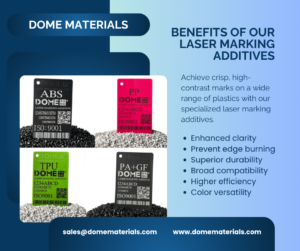
Marking Quality
Contrast and Clarity
High-quality laser marks are defined by readability, contrast, and resolution. Key criteria for evaluating marking quality include:
| Criteria | Description |
|---|---|
| High Contrast | Ensures visibility with a clear distinction from the base material. |
| High Resolution | Supports fine text and intricate designs. |
| Permanence | Ensures marks remain durable over time. |
| Dimensional Stability | Maintains mark integrity under varying conditions. |
| Economic Efficiency | Balances cost with quality and durability. |
DOME Materials Laser Marking Additives for Plastics enhance contrast, clarity, and marking speed, outperforming traditional methods like ink printing or adhesive labeling. These additives can increase marking speed by up to 15% while supporting sustainability and cost reduction.
Permanence
Mark permanence is critical for long-lasting product identification. Testing methods include:
- Spectrophotometry: Measures mark appearance over time.
- Microscopy: Inspects contrast, width, depth, and micro-cracks using optical, ultrasonic, or electron microscopes.
- Environmental Testing: Evaluates resistance to heat, chemicals, and UV exposure.
DOME Materials additives ensure marks remain readable and stable under harsh conditions, meeting industry standards for durability.
Durability and Compliance
Environmental Resistance
Laser marks must withstand environmental stressors to maintain readability. Key factors affecting durability include:
| Environmental Factor | Impact on Durability |
|---|---|
| Extreme Temperatures | Can cause overheating and unstable laser output. |
| Chemicals | May degrade material and mark integrity. |
| UV Radiation | Can lead to fading and mark deterioration. |
Additional production challenges, such as temperature swings, high humidity, or dust, can also affect marking clarity. DOME Materials Laser Marking Additives for Plastics enhance resistance to friction, chemicals, UV light, and weathering, ensuring stable polymer chains and minimal gloss loss or discoloration.
Regulatory Compliance
Compliance with industry standards is non-negotiable, particularly in regulated sectors. Suppliers must provide documentation to verify:
| Requirement Type | Description |
|---|---|
| Performance | Laser products must meet specific performance standards. |
| Labeling | Proper labeling per regulatory requirements. |
| Informational | Safety and usage information for laser products. |
DOME Materials provides certificates and technical data sheets to ensure additives meet safety and performance regulations, facilitating audits and ensuring compliance.
Cost Considerations
Total Cost Analysis
Evaluating the cost of laser marking additives involves more than the initial purchase price. A comprehensive cost analysis includes:
| Cost Factor | Description |
|---|---|
| Initial Investment | Upfront cost of additives. |
| Operating Costs | Expenses related to additive use during marking. |
| Maintenance | Costs for equipment upkeep and additive performance. |
| Marking Speed and Quality | Impact on production efficiency and cost savings. |
Compared to traditional methods, laser marking additives eliminate consumables like inks or transfer films, reduce training time, and minimize equipment downtime. For example, switching to laser marking in electronics manufacturing can eliminate ink costs and boost efficiency by 30%. In automotive applications, replacing transfer films can increase marking speeds by 40%.
Tip: Collaborate with suppliers like DOME Materials to analyze cost structures and identify savings opportunities.
Supplier Support
Effective supplier support is essential for successful laser marking. Key considerations include:
| Aspect | Description |
|---|---|
| Custom-Formulated Additives | Tailored solutions for specific plastics and applications. |
| Technical Support | Guidance on optimizing laser parameters. |
| Scalable Solutions | Support for high-volume production demands. |
DOME Materials excels in providing customized additives, technical expertise, and scalable solutions. Their team assists with compatibility testing, laser parameter optimization, and regulatory documentation, ensuring seamless production and compliance.
Note: Engage suppliers early to leverage their expertise in compatibility, marking quality, durability, and compliance, ultimately saving time and costs.
Evaluation Checklist
To ensure optimal results, use the following checklist to evaluate laser marking additives:
| Measurable Outcome | Description |
|---|---|
| Detection Capability | Detects modified polymers at low concentrations. |
| Traceability | Enhances process control and quality assurance. |
| Material Properties | Maintains polymer performance without negative impacts. |
Consulting with DOME Materials ensures expert guidance and tailored solutions for challenging plastics.
FAQ
Which plastics work best with laser marking additives? Polypropylene, polyethylene, ABS, and polycarbonate yield excellent results with DOME Materials Laser Marking Additives for Plastics. Always test new plastics before full-scale production.
How can mark durability be verified? Test marks for resistance to heat, chemicals, and UV exposure using spectrophotometry and microscopy. DOME Materials additives ensure long-lasting, readable marks.
Is switching from ink or labels to laser marking feasible? Yes, laser marking is faster, cleaner, and more cost-effective. DOME Materials additives simplify the transition, enhancing efficiency.
Do laser marking additives affect plastic properties? When used within recommended concentrations (0.5%–4.0%), additives like those from DOME Materials do not compromise polymer strength or flexibility. Testing is advised to confirm performance.
What support does DOME Materials provide? DOME Materials offers technical support, custom formulations, and compliance documentation, ensuring optimal marking results and regulatory adherence.
By prioritizing compatibility, laser-additive synergy, marking quality, durability, compliance, and supplier support, manufacturers can achieve superior results with laser marking additives. DOME Materials Laser Marking Additives for Plastics provide reliable, high-performance solutions tailored to diverse plastic manufacturing needs.

